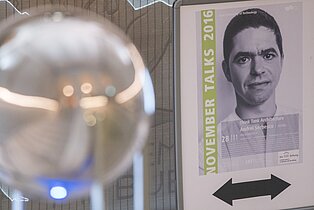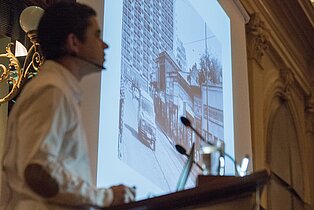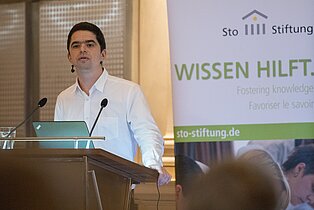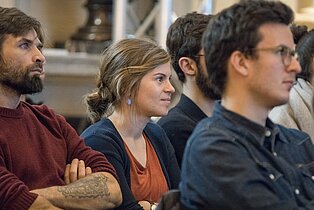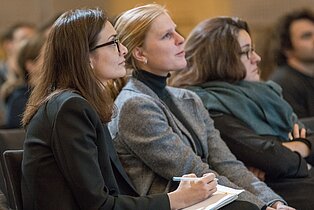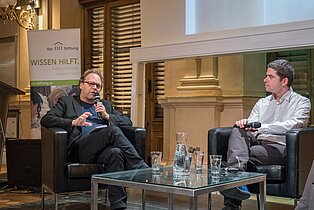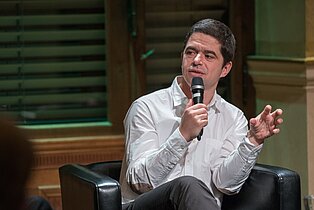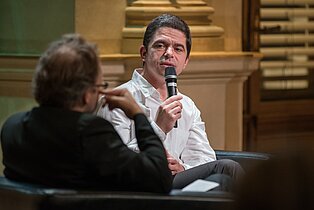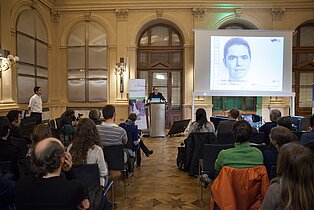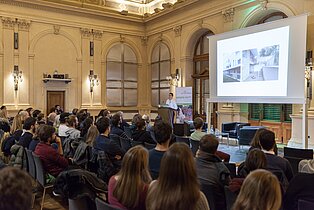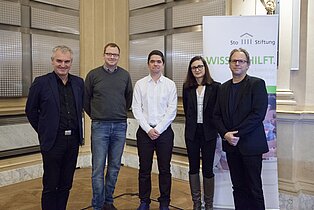Andrei Serbescu | ADNBA | Bukarest
The way people live affects architecture. Architecture, on the other hand, can help decide how a city will develop. Especially when it is as multi-layered as Bucharest. During the third instalment of the Sto Foundation's November Talks 2016, Andrei Șerbescu spoke about the correlation of living and living space.
Just like differently coloured sediment layers, a great number of styles and historical eras dominate the architectural face that Romania's capital Bucharest presents. The first houses that were built surrounded churches, the communist regime introduced the classic prefabricated building blocks and modern residential areas with private green spaces were added after that. In between is the monumental structure of the seat of parliament. And rural spots with picturesque alleyways and colourful single-story buildings are interspersed everywhere. Andrei Șerbescu, who was born in Bucharest in 1977, works with this "urban fabric".
No stone is left standing wherever the office ADNBA, which was founded in 2003, makes its mark. Its hallmarks are clear and distinct. After all, the motto of the office is "Fight the burden of boredom". These types of residential buildings challenge egalitarianism, rank and file houses and apartments designed with a copy and paste style. It appears that the guiding principle for Șerbescu's housing project is: Never build identical apartments! Take "Mora Housing", for example. The project respects its local surroundings, and its natural stone envelope makes it a monolithic structure that is also bright and friendly. Each loggia and balcony is unique and communicates with the space on the outside. Just like the building in the street "Petru Rareș". The complicated shape fits Bucharest and its patchwork quilt of different building styles on a small space. "Măicănești" also adheres to this creed: Houses must have a strong connection to their environment. Each apartment has a balcony, a loggia or a garden. And none looks like any other.
"We don't have a 'method'", Andrei Șerbescu admits freely. "Our work is a series of stages, of spaces." Visiting and researching the locations also isn't a top priority. The office relies on the power of imagination – and in particular likes to work with young people. "The imagination of my students inspires me", the architect said. "Their fantasies are even greater than built architecture". At the 2016 Venice Biennale, Andrei Șerbescu demonstrates what he means by that. The installation looks like a meticulously designed ivory carving, an outline of residential buildings – its interior as elaborate as a 3D rendering. But it is made of paper and was created by the fingers – and brains – of his students. It's even possible to look out of the tiny windows through the eyes of a future resident. "We are allowing architecture to come alive even before it is built", said Andrei Șerbescu.
The "Dogarilor" project includes 72 living units that attempt to conciliate different residential densities, sizes and topologies. And, naturally, each unit is unique. Narrow alleys and tiny gaps create public spaces. There is a cafeteria in the basement and a terrace serves as a communal area. Șerbescu emphasises that the concept of a "shared space"does not always work. "The cafeteria works well but the terraces not so much. Apparently people need more private space than we thought." The "Occidentului" project follows a similar path. It offers the advantages of a city centre and combines them with the tranquillity of a village. Everything is close by – from cafés and a salon to restaurants. The 21 apartments play with the heights of the ceilings and go against the grain with regard to the way the units are divided up. Some of the apartments feature rooms that are one-and-a-half times as tall as standard ones. The neighbour lives in a mezzanine. That creates a lot of space in a small area. In a way that is playful and intricate, the individual living units form a whole – just like in the video game Tetris when the perfect piece comes that is needed to win.
When Andrei Șerbescu and his team imaginatively think about how people will live in their apartments, questions arise such as: How can we grow a city? How does architecture change spaces? Sometimes he visits the completed apartments and their residents, which is often surprising: "In the end it always looks completely different. But much better!
Andrei Șerbescu, born in 1977, lives and works in Bucharest. He graduated from UAUIM (University for Architecture and Urban Planning Ion Mincu) in 2002 and has been teaching there ever since. He founded the office ADNBA in Bucharest one year later. In 2011, he presented his dissertation on traditional architecture in modern Romania. The projects of the office have garnered many national and international prizes and nominations.



